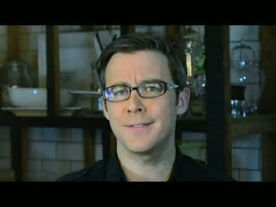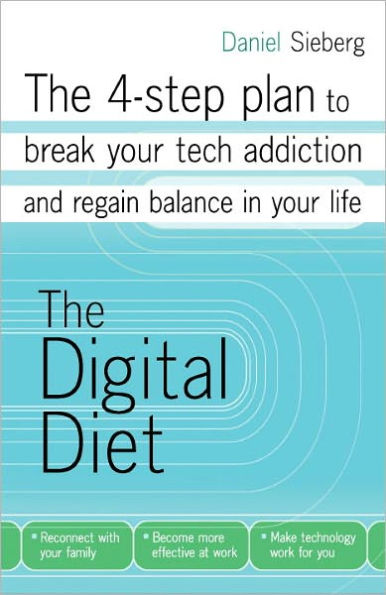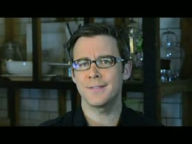
The Digital Diet: The 4-step plan to break your tech addiction and regain balance in your life
272
The Digital Diet: The 4-step plan to break your tech addiction and regain balance in your life
272eBook
Related collections and offers
Overview
Technology has overwhelmed our daily lives to the point of constant distraction. Many of us can no longer focus on a single task or face-to-face conversation without wanting to reach out—or retreat—to the virtual world every few minutes.
Science and technology reporter and recovering digital addict Daniel Sieberg has devised a foolproof 4-step plan to help you regain control, focus, and true connection in your life.
Step 1//Re: Think:
Consider how technology has overwhelmed our society and the effect it’s had on your physical, mental, and emotional health.
Step 2//Re: Boot:
Take stock of your digital intake using Sieberg’s Virtual Weight Index and step back from the device.
Step 3//Re: Connect:
Focus on restoring the relationships that have been harmed by the technology in your life.
Step 4//Re: Vitalize:
Learn how to live with technology—the healthy way, by optimizing your time spent e-mailing, texting, on Facebook, and web surfing.
This program will enable families to communicate better, employees to be more productive, and friends to stay in touch. Sieberg teaches us how to manage and use the technology in our lives to our advantage, without letting it control us.

Product Details
| ISBN-13: | 9780307887399 |
|---|---|
| Publisher: | Harmony/Rodale |
| Publication date: | 05/03/2011 |
| Sold by: | Random House |
| Format: | eBook |
| Pages: | 272 |
| File size: | 2 MB |
About the Author
DanielSieberg.com
Read an Excerpt
Step 1
Re: Think
You Are What You Type
"Any smoothly functioning technology will have the appearance of magic."
-Arthur C. Clarke, author of 2001: A Space Odyssey
Brace yourself, for this is the wired world in which we live: for only $29.95 (plus shipping and handling) you can be the proud owner of the Wrist Cell Phone Carrier. What is the Wrist Cell Phone Carrier, you ask? I can best describe it thus: imagine gluing a wooden Popsicle stick to the back of your cell phone, so that the top half of the stick is attached to the phone and the bottom half of the stick is exposed. Like a cell-phone Popsicle. Then, while cradling the device in your hand as though you might make a call, use pink duct tape to strap the remaining stick portion to your wrist. There may be some Velcro involved, too, but that's pretty much it. This state-of-the-art accessory is designed to help you carry your cell phone everywhere you go and ease the strain on your arm and hand as you hold it next to your ear for prolonged periods.
Although this sounds like a story from the Onion, I assure you this is a very real product; I've seen it in the pages of a SkyMall catalog. It's for sale. People buy it.
Let's face it: the Wrist Cell Phone Carrier is indicative of our larger problem with technology dependence-we've become so attached to so many products and services that we need crutches to help us soldier on. It's all made us disconnected and disoriented. It's time to hit the reset button.
Plugged In, Checked Out
Before you stand on your soapbox (made of old video-game consoles or VCRs) and shake your fist in the air, please know that I'm not trying to stand in the way of the American dream of spontaneous consumption. I love technology and I always will. From Internet memes to video games. I've covered all things digital for more than a dozen years as a reporter for ABC News, CBS News, and CNN, to name a few, and I consider myself a proud geek at heart. But I've come to recognize that sometime in the last decade we've transitioned from being a culture that uses technology to being one that is completely absorbed by it. The sheer volume began to overwhelm us, and the swelling flood of gadgets and Web sites and doodads started to align into a force that invaded our lives.
The force hit, not like a nuclear explosion, but like the slow invasion of an ant colony. I've watched massive colonies of millions of army ants come to life at night in the jungles of Costa Rica. There is no noise, no perceived aggression, and not even a hostile undertone. They simply push forward and devour whatever is in their path. Now, is technology killing us like a wave of army ants? With a few exceptions, like distracted driving and mind-sucking YouTube videos, not literally. But it may be systematically, silently, and imperceptibly destroying parts of our lives that we hold dear.
It's time to look more deeply at our actions, to pull back for a time and then reshuffle our reliance on technology to make it work for us instead of the other way around. There's no turning back-the rate at which technology is infused into our lives will only accelerate. We need to accept that premise. Think of it like having to eat but empowering yourself to choose the best foods and mealtimes and following a steady exercise plan. The same goes for technology. The Digital Diet will help you turn yourself into a high-powered, high- efficiency communicator.
This book contains a plan for slimming down the use of everything from gadgets to social networks to video games in the hope of making yourself healthier, happier, and whole in the twenty-first century. To accomplish this goal, we will explore better tech management, examine ways to streamline use of everyday devices like your smart phone, and heighten awareness of how technology affects our (real) lives and those around us.
Through a step-by-step, dietary-style approach, the Digital Diet will help improve your connections with the world around you and the people you love. It's about being present in the moment-the moments that matter-and having the tools to maintain that mind-set for a lifetime. You'll learn how an overdose of devices and services has harmed our overall health: physically, mentally, and emotionally. To combat those effects, I'll introduce gadgets and applications that can enhance our lives. It's about embracing the stuff that works and shedding the stuff that doesn't. Think of it as "computing POWER," being aware of what all this technology is doing to you and your family and having the tools to make smart choices and manage your digital intake in the future.
Believe me, it's not too late to change course. And if you know the problem is larger than just you, then the Digital Diet can easily be expanded to include your children or your spouse or other family members, too. There is strength in numbers.
Will there be days when the Digital Diet falls apart? Of course. It happens to me and it will happen to you. There are days when I can't stand trying to limit my indulgence. And there are days when all my gadgets get the best of me. We're not cyborgs (yet). But just as you can eat that whole bag of sour cream-and-onion potato chips one night and opt for a chicken salad with pine nuts for lunch the next day, the same is true of the Digital Diet, since you can return to it after a lapse. It's a cumulative effect. A marathon, not a sprint.
Flashing Forward
It's possible that you're reading this book about refining your high- tech appetite through electronic means, like a Kindle or Nook or Sony eReader or iPad. You may have heard about it through a social network or a blog or an e-mail list. So you may be wondering if there's a contradiction in a message about streamlining technology "joining forces" with today's new media. Not as I see it. Remember that the Digital Diet is about moderation, not elimination; technology should liberate you, not inundate you. The purpose of this book is to reach as many people as possible and share ideas and revelations that I've gathered and refined. This guidance will naturally migrate online as you share your experiences and in turn help others and offer further suggestions and tips. A book about taming technology can therefore harness its breadth to spread a message (in other words, reading it on your Kindle or Nook is completely acceptable). In computer terminology, this book is not meant as a closed loop. I'm starting the chain reaction by writing, but the message should be shaped and molded and fine-tuned over time with the aid of the community at large, including online. Much like us, it's meant as a work in progress.
So why did you pick up this book? Was it the cover art? Was it the title? Was it on sale? Or was it because of an undeniable twinge saying your footing in technology feels increasingly like quicksand? I'm guessing the latter. You are not alone. In fact, you are well in the majority. You may also be worried about what an excessive dependence on technology is doing to your kids or siblings or friends. Maybe you're still not sure if you fall into this category. Let's see:
-Do you sometimes feel the urge to pull out your smart phone when someone else is making a point in conversation?
-Have you ever realized that you were texting while your child was telling you about her day at school and later couldn't remember any of the details of her story?
-Have you ever felt that something hasn't really happened until you post it on Facebook or tweet about it?
-Do you sometimes wonder if you could actually focus better in real life before all these gadgets invaded your space?
-Does a flashing red light on your BlackBerry make your heart flutter?
-Does a ringing/vibrating cell phone interrupt and trump everything else?
-Has looking left and right given way to looking up and down as you type on a smart phone and try to navigate a sidewalk?
-Do you often see the back of your child's (or spouse's) head silhouetted against the glow of a video game?
-Do you feel anxious if you're offline for any length of time?
-Do you know you shouldn't be texting and driving-but still do it?
-Do you find that your family can be in the same room but not talking to one another because you're each interacting with a different device?
If you (grudgingly) said yes to any of these questions, then you're among the millions of people who can relate to being overwhelmed by technology. Fear not-there is a way to shift your focus and find a better way of living with technology through a four-step program. It's time to make peace with technology, not war. Don't hate your phone or your e-mail or your Web services. Fold them into your routine and learn to tame them in a way that gives you authority. They serve you.
While we question what we eat or drink on a regular basis, we rarely question what this constant immersion in technology is doing to us. Think about it. Gadgets and Web sites don't come with nutritional labels. No one is regulating the amount of technology you ingest or how it's most effective for you. This book is meant as a guide to the technology in your life and aims to empower you to manage it and benefit from it. It's possible to trim your tech while still staying in touch, no treadmill required.
The tipping point for consuming technology has been reached, and our minds and bodies know when we've gone too far too fast. Think back to 1996, when cell phones and the Web were both delightfully extraordinary and totally foreign. We gleefully programmed voice mail and naively clicked on Internet ads. Something happened on the way to connectedness. No one said "stop." No one even said "slow down." Caught in the middle was the average consumer, who suddenly risked falling behind as the accelerating pace of technology took off like a viral video of laughing babies.
Flash forward to 2011, and I wonder how many of us still have cell phones from several years ago gathering dust. Recharger cables have become the scourge of the modern household. Too many to plug in, not enough outlets, and a damn mess when it comes to actually organizing them. We've struggled to create new passwords as old ones expire. We can't remember a day that didn't involve "www." I would love to extol the virtues of our wise and sage decisions when it comes to purchasing technology and finding a place for it in our lives and maximizing its uses. I really would. But I can't. Not on the whole. Don't take it personally-I'm lumping myself in there, too. We've blindly dashed through the gauntlet of gadgets and never once paused to catch our breath. Like a helpless lover who forgets everyone else around him, we've pursued our lust for all things digital.
How fast has it happened? In 2000, the percentage of people who had Internet access around the world was at about 48 percent. By 2010 it was up to 79 percent. In the United States, high-speed connections in the home hovered around 3 percent in 2000. Ten years later that figure had jumped to 63 percent. From 2006 to 2010 laptop ownership in the U.S. increased from 30 percent to 52 percent. Today, more than 85 percent of adults own a cell phone, 96 percent of eighteen- to twenty- nine-year-olds do, and more people are surfing the Web on the go versus sitting at a fixed computer. Lest you think these trends are all about younger people, the use of social networks by adults in the U.S. over the age of fifty jumped from 22 percent in April 2009 to 42 percent in May 2010. Clearly, in many ways we've become married to our technology. That doesn't mean a divorce is imminent-it means we need a prenuptial agreement.
Measuring Up
We each have different digital metabolisms. Disconnecting right away is like a starvation diet: lose the weight too fast and you gain it back. Therefore, when it comes to technology I loathe terms like "fasting" and "starving" and "off-lining." This diet is about achieving a balance. It's about maintaining a healthy consumption of technology. Yes, we'll discuss a "detox" period, but it's brief and meant to instill awareness.
The concept of limiting and trimming technology may sound hypocritical coming from a technology reporter whose job is to help people keep up with the latest and greatest, but that's the point-I've often been too eager to adopt every new gadget or trend simply because it's out there. Many of us fit somewhere in that spectrum. I don't think there is a perfect Digital Diet, but I've realized that we do need to regulate consumption. Cut here, add there. Too much of certain foods can be harmful. It's a no-brainer. So why not apply the same mentality to your binary calories? This book is about bringing more awareness, shining a light on behaviors and motivations, and searching for a "best practices" approach to our love of technology.
TechFact
The New York Times reports that the average computer user checks forty Web sites a day and switches programs up to thirty-six times an hour.
Technology isn't going away, and we're all in this together. This book is a manual, and I'm acting as your tech support (reporting for duty). You can extrapolate bits and pieces, decide not to do some of the exercises, or read it first and then go back and try the actual plan later. You also do not have to do it in exactly twenty-eight days. The time line is meant as a trail of bread crumbs-following these directives and exercises over roughly four weeks will lead you to a better place. But as with any dietary plan, you will only get out of it what you put in. At the core, the Digital Diet is about common sense and common courtesy. Impress yourself and those around you. Be the master, not the slave. Prepare to reboot and dig in.
Related Subjects
Videos


